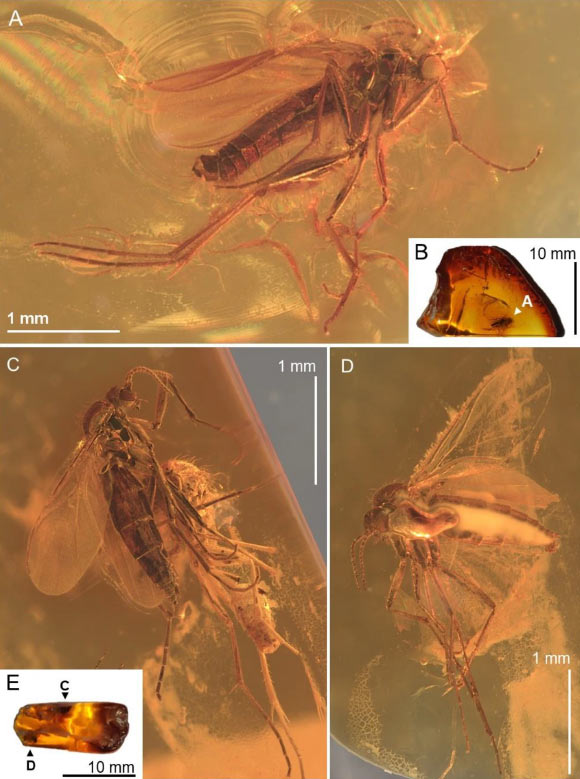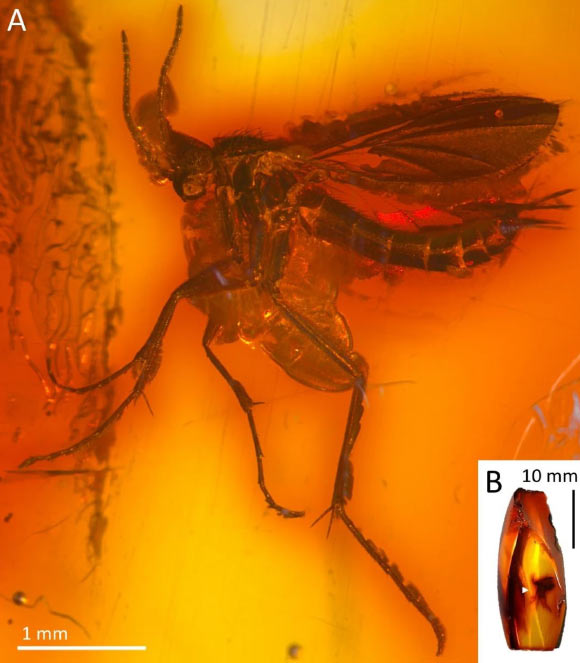
Until now, the fungus gnat genus Robsonomyia was represented by two living species: Robsonomyia reducta from North America and Robsonomyia sciaraeformis from Asia. Paleontologists have now found two new fossil species of Robsonomyia — named Robsonomyia baltica and Robsonomyia henningseni — in a piece of Baltic amber.
The 40-million-year-old piece of Baltic amber was found in the 1960s along Denmark’s North Sea coast.
For decades, the specimen had been tucked away in the 70,000-piece amber collection of the Natural History Museum of Denmark.
Recently, it was retrieved from the drawers and subjected to a thorough examination by Alicja Pełczyńska, a Ph.D. student at the University of Łódź and the University of Copenhagen, and her colleagues.
The researchers were able to identify the fossilized gnats in the specimen as two extinct species from the rare genus Robsonomyia: Robsonomyia baltica and Robsonomyia henningseni.
Today, living species of the genus are only found in Hokkaido, Japan and California.
“This is the first time that anyone has found a fossil gnat of this genus, which were only thought to live in Japan and North America,” Pełczyńska said.
“The finding demonstrates that this type of gnat was also widespread in Europe during past climates and gives us new knowledge about the gnat’s distribution on Earth.”
“Insects mate end to end, which places certain demands on their genitalia,” said Dr. Lars Vilhelmsen, curator at the Natural History Museum of Denmark.
“The male has appendages, or forceps, next to the actual penis, which it uses to grasp the female gnat with while mating.”
“We used the shape of these forceps to identify it.”
The scientists believe that the ancient gnats are a kind of missing link that connects its two rare and still living relatives in Japan and the United States.
“Until now, the distribution of this genus of gnat has been strange, with many thousands of km between species,” Pełczyńska said.
“Therefore, it makes sense to have found it in Europe, which is approximately halfway between Japan and North America.”
The discovery is reported in a paper published in the journal Scientific Reports.
_____
A. Pełczyńska et al. 2024. Eocene amber provides the first fossil record and bridges distributional gap in the rare genus Robsonomyia (Diptera: Keroplatidae). Sci Rep 14, 9252; doi: 10.1038/s41598-024-59448-y
 Print
Print






